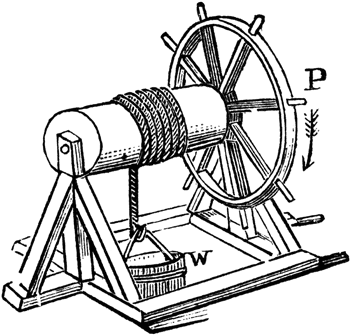simple machine

The windlass is a well-known application of the wheel and axle..
The ancient Greeks were first to define simple machines – devices that change the magnitude or direction of a force to make a task easier – but most of them had existed for millennia. Historically, there are six types of simple machine:
The inclined plane was probably the first, used in prehistoric times to slide heavy weights (though there is no hard evidence to prove this). Next came the wedge, which – by creating a sideways force when pushed into something – enabled the user to split materials such as rocks and wood. The earliest examples of such tools, found in India and Mesopotamia, date to around 7000 BC. The first documentation of the wheel and axle comes from the Sumerian city-state of Ur, from around 3500 BC. Its earliest use was probably in raising water from wells, but it also led to the development of horse-drawn chariots.
The pulley, by necessity, followed the wheel – being a wheel with a rope wrapped around it – and it was used to raise and lower objects. It is likely that pulleys were used in the building of the Great Pyramid of Giza in c. 2560 BC. Levers are also believed to have been used in ancient Egypt, but it was Archimedes who first described the principle of using one. The screw – which allows a rotary motion to be converted into a forward or backward one – appeared in ancient Greece. Sometimes credited to Archytas (c. 428–c. 350 BC), it was used in wine and olive presses.
These simple machines enabled us to push beyond our natural capabilities and laid the foundations for innumerable technological advances.


